Sneaking within bow-range of a whitetail deer may seem impossible, yet you’ll see more deer by acting like coyote than a statue. As you walk & stalk, you will be hunting, scouting, and searching for fresh deer sign that may make an excellent ambush spot at the end of the day. Stalking whitetails will be a radical change for many hunters so keep these six steps in mind.
Hunt Where the Deer Are
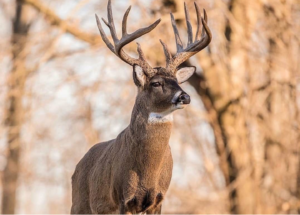
This may sound obvious, yet your ability to move on the ground means you can maximize your chances for deer contact. If you walk & stalk the edge of a field or food plot at midday, your chances of seeing deer are remote. However, if you sneak field edges early or late, your chances of getting a shot increase dramatically.
One of my earliest stalks occurred at noon on a warm October day after an unproductive morning on a stand. I knew that deer often bed on the eastern face of a tall ridge that had a narrow crest. What if I stalked the knife edge and peeked over the sides? Might I catch a buck in its bed at midday?
After climbing to the top, I eased slowly and quietly, playing peek-a-boo with terrain on both sides. I used a pair of Burris binoculars and relied on a Nikon rangefinder for exact distance readings. Within 30 minutes, I spotted a fat 4-point buck bedded with its back to the ridgetop, exactly as expected.
The range was 49 yards, a fairly long shot, so I backed up took several deep breaths and concentrated on an exact impact spot. The arrow launched and struck the buck down through the body. It rolled over and lay still. At a time when most archers were eating lunch or taking a nap, I was dragging my buck back to the truck. By using binoculars, terrain features, and a knowledge of deer bedding I was able to score.
Play the Wind-
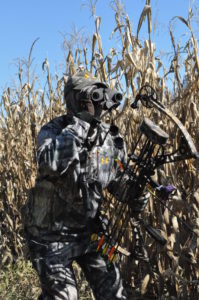
When walking & stalking whitetails, elk, bear, even wild hogs, moving into the wind is critical for success. If you hunt in mountainous terrain, you can count on air moving downward in the morning, changing upward around 10:00 am and switching back again in the late afternoon. In more rolling terrain, frontal systems will dictate wind direction and quick weather- check on your cell phone can show how the air will move.
Moving into the wind in a modest breeze avoids scent detection and will disguise the sound of your movements. A perfectly quiet morning will amplify the sound of movements and under such conditions, stand hunting will be more productive.
If wind swirls, as it often does, your scent elimination preparation can save the day. First, never stop for gas or at a convenience store on the way to your hunt. Such places will contaminate your clothes and boots with gasoline and other scents that will spook a deer’s nose in an instant. Take a shower, de-scent your clothes, and never drive in your hunting boots.
Practice the Part
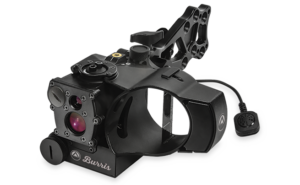
If you hunt from a tree stand you should practice shooting from an elevated platform. Likewise, since you will be stalking on the ground, practice shooting in realistic situations. A 3-D deer target is best so that you can make angling body shots both to increase your accuracy and better understand deer anatomy. For a deer standing broadside or walking away, aiming for the off-shoulder is the rule and provides a lethal hit every time.
Estimating distance is critically important for hunters who walk & stalk and there’s no better bow site for the job than the Burris Oracle. If a buck suddenly appears and you must anticipate a shooting window and make a quick shot, you can aim, range, and shoot in a second. This amazing bow site will illuminate a dot for the exact range. Burris has had range-finding scopes on the market for years so it’s only natural that they bring this technology to bow hunting.
Know Your Gear
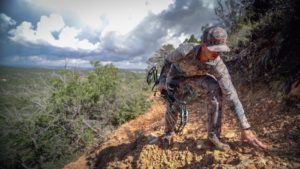
If you plan on ambushing a whitetail deer on the ground your gear needs to be in top shape. You will need good camouflage clothing that’s quiet and blends well with the environment. This includes full coverage of your head and hands, the parts of your body that show the most flesh and move the most.
Make sure your bow is tuned properly. Fast flat-shooting models like the Xpedition Mountaineer models are ideal because you get 340 fps speed with the forgiveness of a 7-inch brace height. These bows draw smoothly and are extremely adjustable with cams that easily change draw length. The 80% let-off and lightweight of just 3.9 pounds makes it perfect for sneaking a whitetail buck.
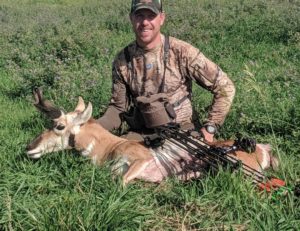
Team your Mountaineer with arrows built the Dirty North Archery (DNA) and you can hone your accuracy to push a broadhead through the tiniest of brushy windows. Brothers Brandon and Caleb Hobbs build arrows with such passion, they close their shop during the month of September so they can hunt each day. When men are this excited about hunting, you know they will build you the best.
Bring them to You
I never hunt deer without a grunt caller. In firearm, muzzleloader, or bow season, you can often bring a deer to your location with a grunt call. My favorite time to walk & stalk hunt is in the pre-rut when I can move slowly and carefully through thick cover, stopping often to grunt and act as a roaming buck.
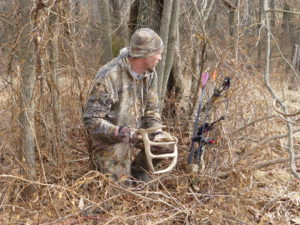
Grunt calls not only lure bucks but help calm does you may jump by mistake. Should a doe spot your movement or hear an unnatural sound, a few puffs on a grunt call will often calm her down. I have had deer snort at my presence and a couple of grunts will shut them up and save the day.
Rattling and scent use can also bring deer to your location. In fact, you can use most of your tree stand tricks with walk & stalk. My favorite spot to deer hunt in the whole world is a narrow cedar-choked creek bottom that’s so thick most hunters won’t go there. I don’t use a tree stand yet have great success on the ground. Once you try walking and stalking whitetails, you’ll soon find other ways to boost success. While your buddies are shivering in the cold, you can walk & stalk on the trail of a big buck like a hungry coyote.
Quick Walk & Stalk video from The Hunting Page team as seen on Outdoors on Outsider
Who walks & stalks? Still-hunting does not mean always moving at a snail's pace, especially in areas with low deer densities. Look for fresh sign as you go, and adjust your pace accordingly. Walk relatively rapidly through open areas with little sign, especially at midday when deer have retreated to thicker cover.
Posted by Outdoors on Outsider on Thursday, August 6, 2020



















![The Best Deer Camp Chili [VIDEO] Deer Chili Ingredients, Tomatoes, Chili Spices](/wp-content/uploads/2015/10/Deer-Chili-Deer-Camp-Recipe-218x150.jpg)
![How to Call Elk Early in the Season [VIDEO]](/wp-content/uploads/2016/08/byers003-218x150.jpg)

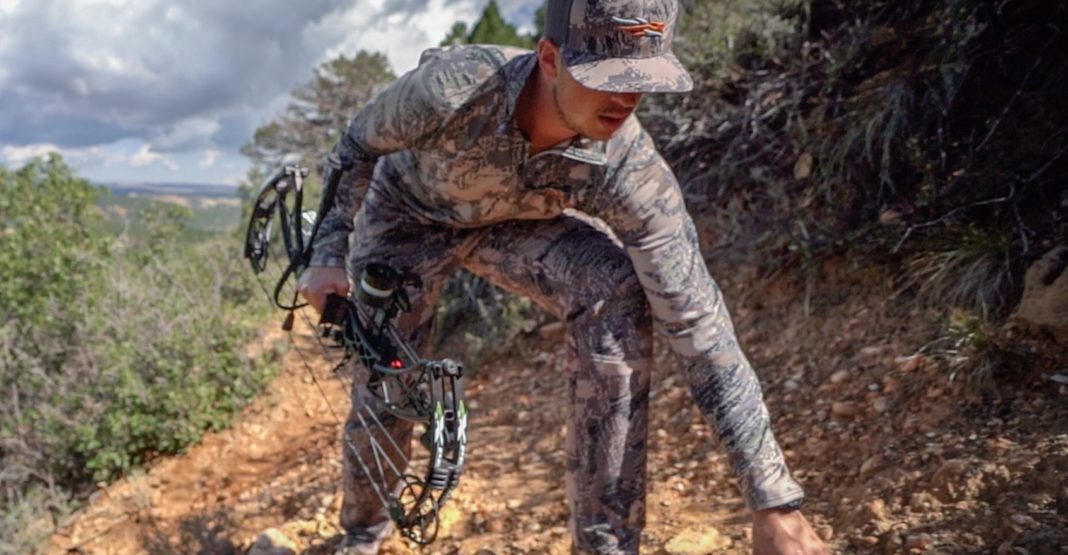
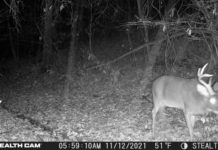


![Idiots Disturb Hunter: How Would You Have Handled It? [VIDEO]](/wp-content/uploads/2015/10/DSC00110-e1474487693878-100x70.jpg)
![Albino Buck Shocked to Shed His Antlers [VIDEO]](/wp-content/uploads/2015/10/AlbinoDeer-100x70.jpg)